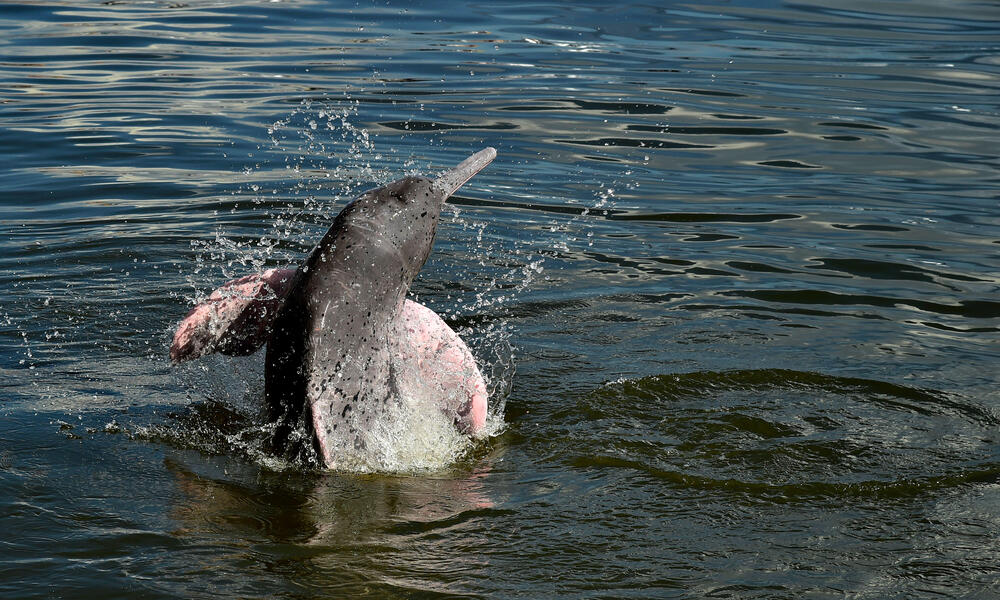River dolphins—the charismatic and iconic animals living in some of the world’s greatest river systems—face a barrage of threats. Since the 1980s, their population numbers have plummeted by 73%, with water infrastructure, unsustainable fishing, and pollution threatening their existence.
River dolphins are important indicators of the health of rivers where they live—the same rivers that are also the lifeblood of huge economies and hundreds of millions of people. Where freshwater dolphin populations are thriving, it is likely that the overall river systems and fish stocks are flourishing—as well as countless other wildlife species, communities, and businesses that depend on them for fish, drinking and irrigation water, and transportation.
We need to act now to protect these important animals, their rivers, and the communities that rely on them. That’s why governments with river dolphins within their borders are coming together to pledge to halt and reverse the decline of all river dolphin populations in both Asia and South America and increase the population where they are most threatened. Under the Global Declaration for River Dolphins, countries will implement specific actions that will tackle threats to the species, improve and preserve their habitat, and effectively manage a network of protected areas, among other conservation interventions.
“Inspiring conservation efforts at local and national levels have yielded some incredible results, but progress is limited, and the threats remain vast,” said Daphne Willems, WWF lead for the River Dolphin Rivers initiative. “This is why the Declaration is vital: we need collective global efforts to ensure the long-term survival of all six river dolphin species. And not just their survival because thriving river dolphin populations indicate healthy rivers—and those are the foundation for thriving communities.”
Conservation efforts around the world have been successful in halting the decline of some river dolphin species. In China, after decades of seemingly irreversible decline, results from the latest census of critically endangered Yangtze finless porpoises show a 23% increase in population over the past five years—the first uptick since records began. And in Indonesia, innovative pinger devices have successfully kept dolphins from dying due to entanglement in gillnets, while also increasing fish catches for local communities.
WWF collaborates with governments, communities, and other partners in countries to raise awareness of river dolphin populations to change policies and practices, address direct threats to the species such as bycatch and infrastructure, protect habitats, and bolster scientific research. We will further this work by helping to deliver the Global Declaration and the associated pledges for action. Organizations that are committed to reducing poverty, protecting the environment, and promoting sustainable development are incredibly important partners on this journey. We hope that we can work together to strengthen the protection of river dolphins and their habitat and help the millions of people who depend on those rivers for their food security and income.

